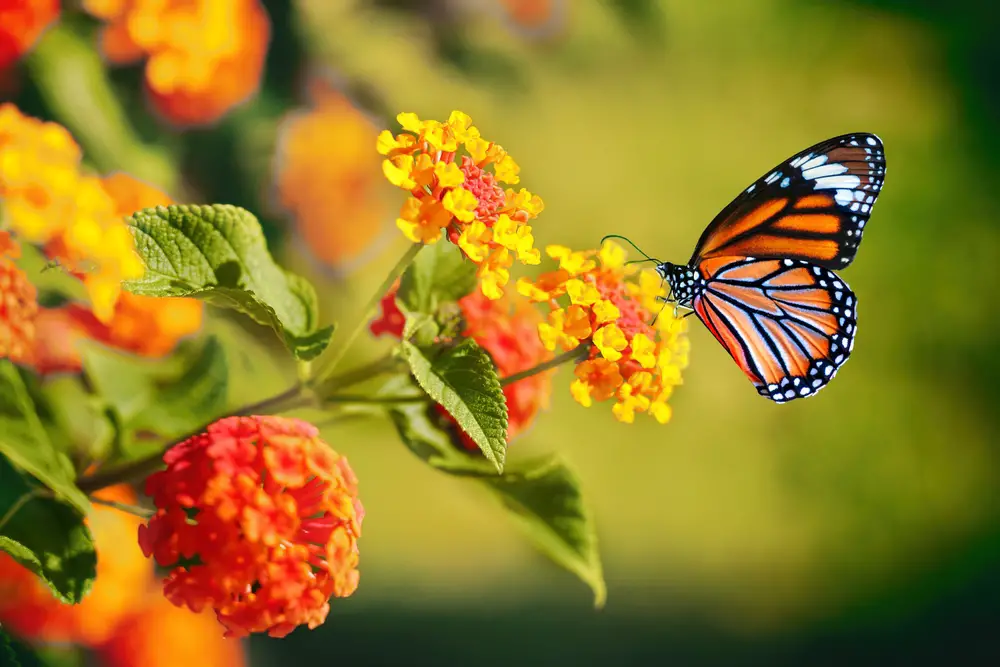Knowing what butterflies eat helps you to draw them into your garden (and butterfly garden), which makes it more beautiful as a result. So, what do butterflies eat (and how can you feed them)?
Butterflies eat nectar. They also lick salt licks for additional nutrients nectar doesn’t provide and drink water. The best ways to feed butterflies are to plant flowers they like, put up butterfly feeders, and make salt licks for them to enjoy.
What Do Butterflies Eat?

In short, butterflies only eat nectar. This means they depend almost entirely on flowers (and fresh, new, nectar-filled blossoms) to survive. You can also help hungry butterflies out by making homemade nectar!
Butterflies also lick salt licks (more specifically, puddles in a process called puddling, described below), but they mostly eat nectar.
When Do Butterflies Start And Stop Eating?
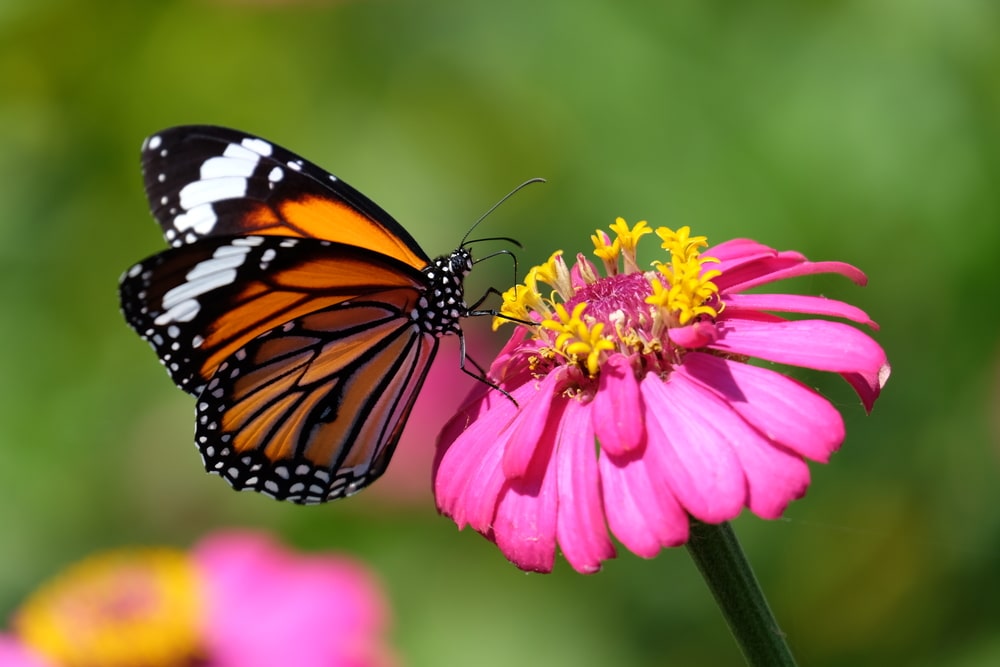
Like most creatures, butterflies have an eating (sleeping, etc.) schedule. You’re much more likely to see a butterfly during their feeding time.
Let’s take a look!
Times Of Year
Butterflies are most active in the summertime with the most sunlight, fair weather, warmth, blossoms, etc. Butterflies are also known to linger until fall.
Times Of Day
The best time of day to see butterflies is the afternoon. Butterflies love the sun and warmth; this is when they can get the most of it. On scorching days, butterflies may wait until later, and you may see them in the late afternoon or evening. Most of the time, you’ll see most butterflies in the afternoon, however!
Butterflies’ Favorite Flowers For Nectar
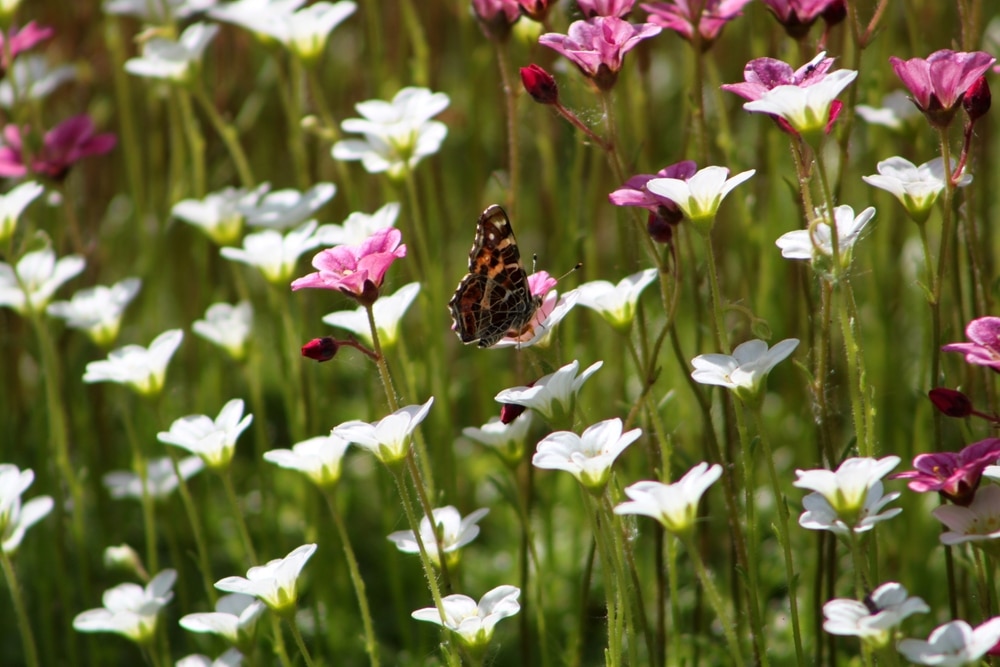
Butterflies still get most of their nectar from flowers, even with butterfly feeders. In fact, butterflies spend nearly all their time flitting from flower to flower, always searching for the next meal. Some flowers provide more nectar than others, so butterflies love them especially (and there are some bees don’t, in case you wanted to avoid them).
Here’s what they are!
Blazing Star
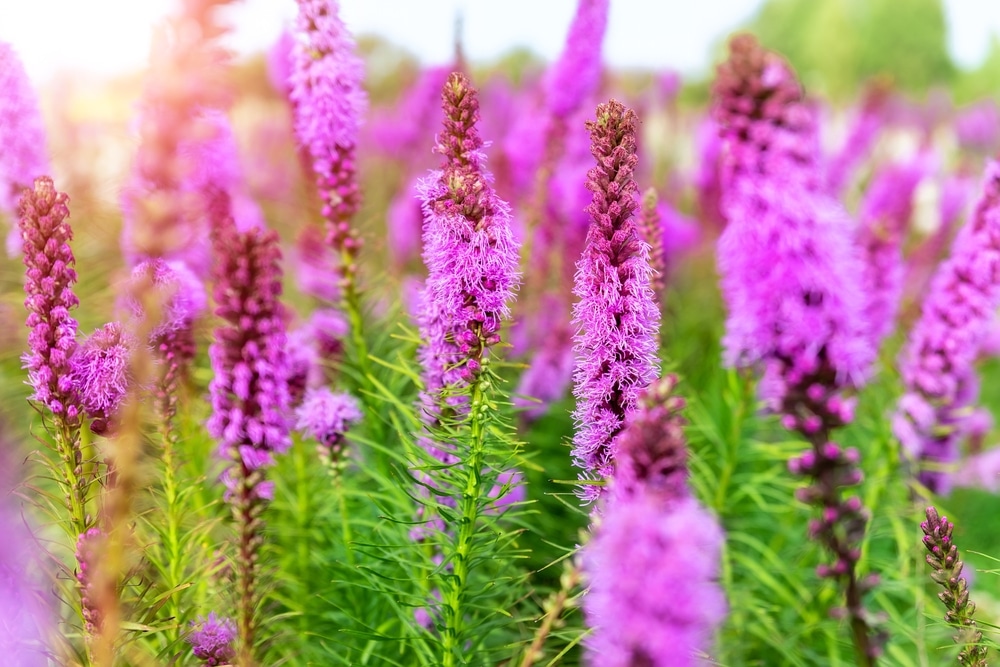
Blazing star flowers come in shades of pink, purple, and purple pink. They grow in fuzzy spires, like shooting stars (their namesake). Blazing star flowers are very popular among butterflies for their vivid appearance and abundance of nectar!
Yarrow
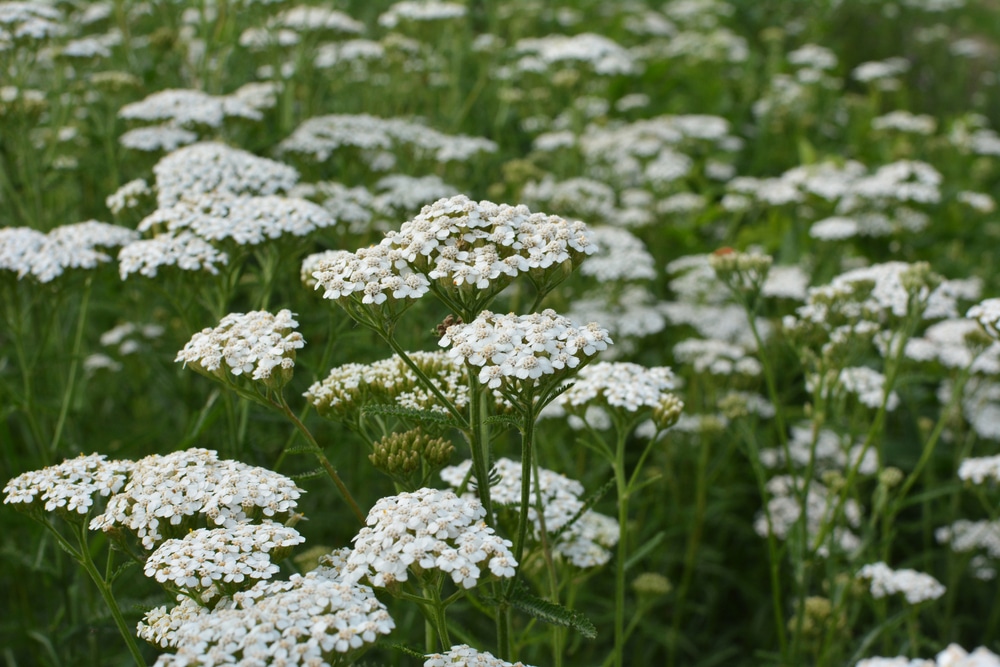
Yarrow grows in slender stems with thick clusters of small blossoms on the end. Each blossom is rich in nectar, making the colorful bunches heavy and fragrant. Needless to say, butterflies can’t get enough of yarrow!
Coneflowers
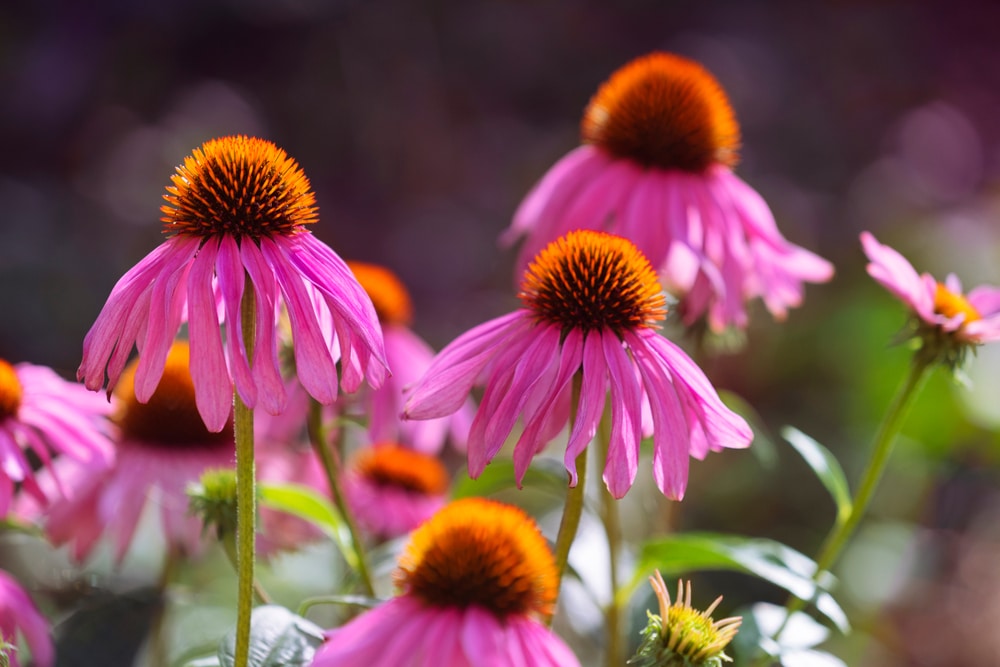
Coneflowers are big blossoms with raised, cone-shaped centers. These centers are full of both pollen and delicious, nutritious nectar.
Lantana Flowers

Lantana flowers grow in sphere-shaped bunches and come in bright multicolors (like pink and yellow or yellow and orange, for example). They have a faint citrus scent, which butterflies also love. But what appeals to butterflies about lantana flowers and other pollinators is their plentiful nectar.
Goldenrod
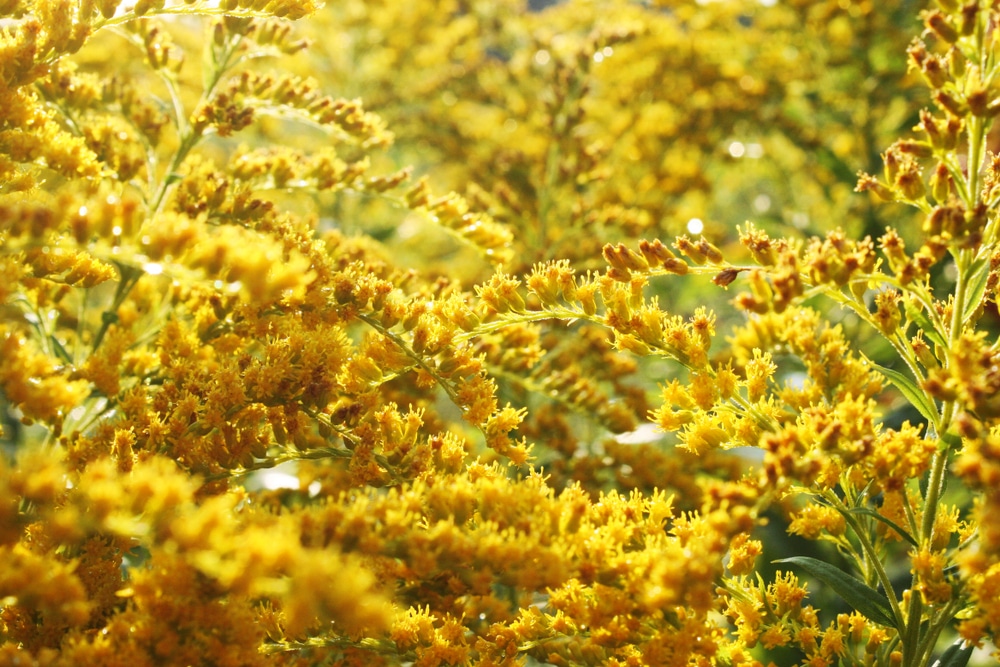
Goldenrod is the gold standard when it comes to attracting butterflies. This plant has a honey-like scent and bright golden bunches of nourishing, nectar-rich blossoms.
Nepeta (Catnip)
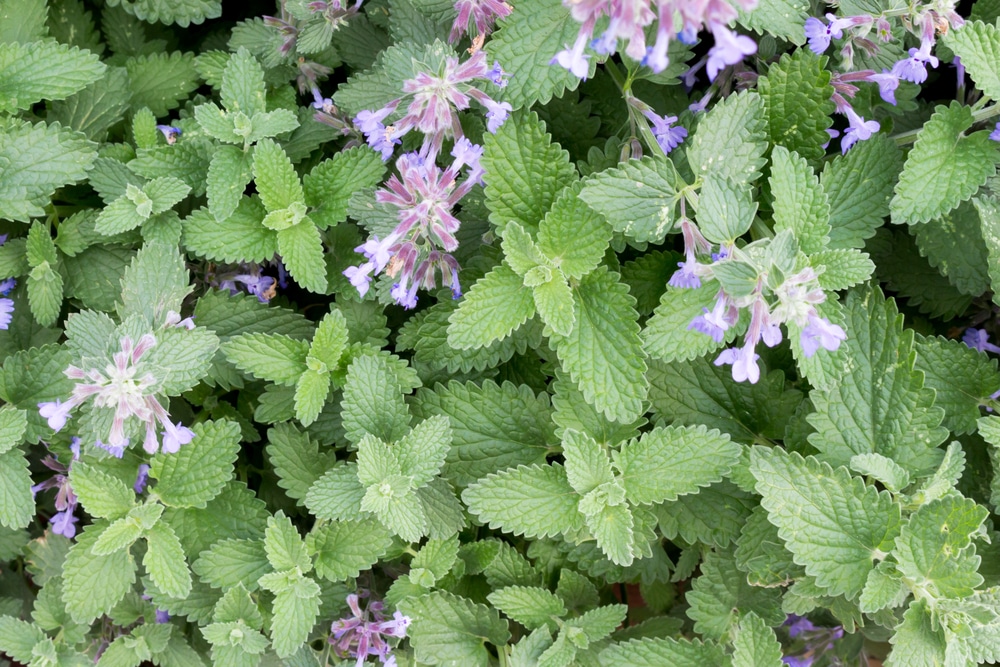
The Nepeta plant grows small stalks of tiny, purple-tinted blossoms. These have a delicate mint scent (that’s appealing to cats and butterflies alike). What’s more, the blossoms are full of sweet, nourishing nectar. Planting some nepeta will do the trick if you want to feed some butterflies!
False Indigo

False indigo has circular, pea-like flowers that grow individually atop spires. These smell like honey, thanks to the honey-sweet nectar inside. Butterflies can see and smell false indigo from far away, and once they do, they’re sure to stop by for a snack!
Daylilies
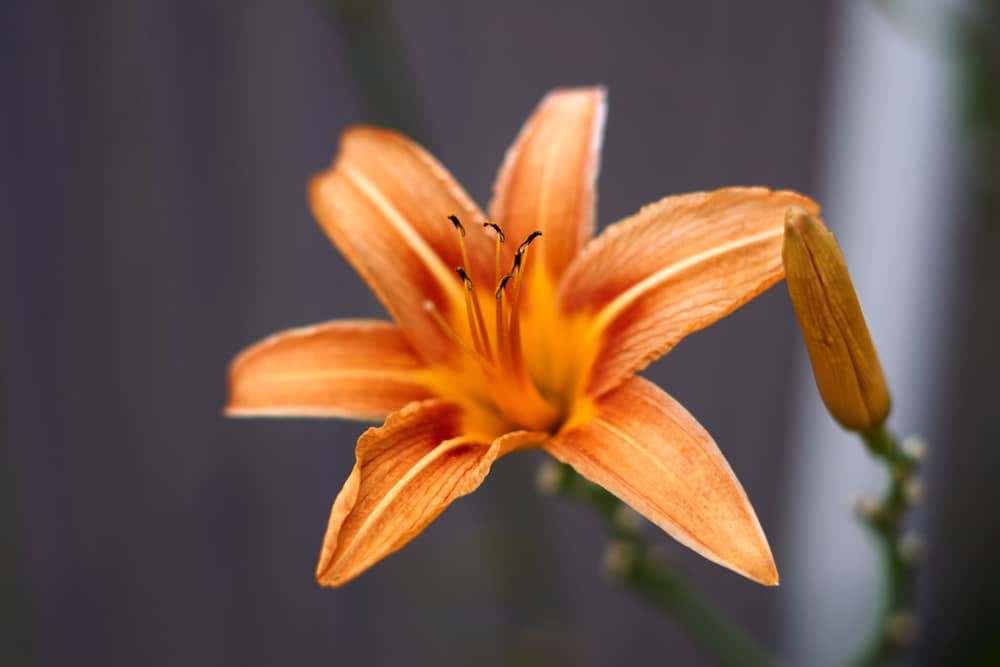
Daylilies are visually stunning plants, boasting enormous, gorgeous, tubular-shaped blossoms. Each blossom also has a deep belly full of rich nectar. If you plant these in your garden, you will feed some butterflies and keep them near.
Milkweed
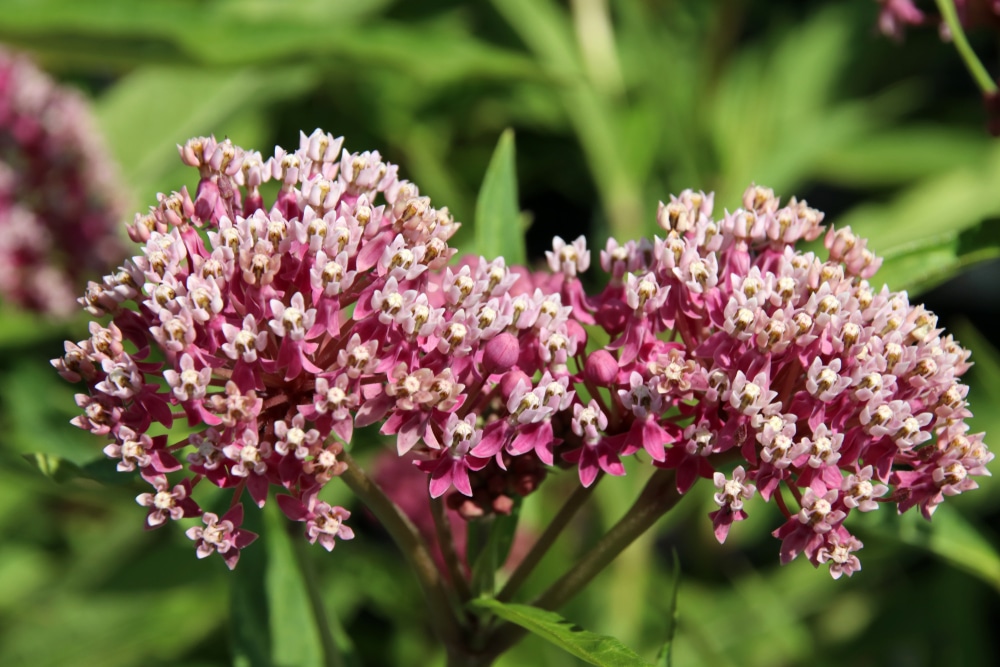
Milkweed is renowned for its popularity among butterflies because it’s made up of hundreds of tiny, conical, nectar-stuffed flowers. They grow in super-fragrant, spherical clusters heavy with the weight of ready-to-eat nectar.
Butterfly-Approved Alternatives To Nectar
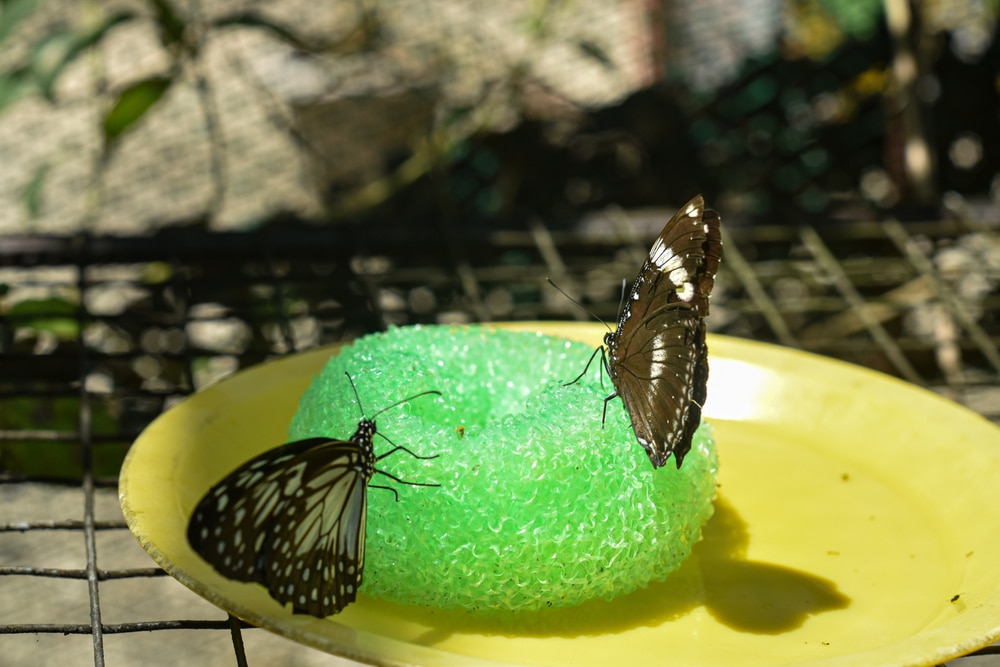
If you’re not keen on planting and maintaining flowers or want to make your own nectar alternative, you have several options.
Let’s start with fruit juice.
Fruit Juice
Butterflies love fresh-squeezed fruit juice. They’re huge fans of super-sweet, juice-rich fruits like watermelons, mangoes, strawberries, oranges, and more. Just place the fruit juice of your choice in a butterfly feeder, and the butterflies will take care of the rest.
Gatorade
Gatorade is another simple nectar alternative. It’s healthy and butterfly-safe. While you don’t necessarily want to add dye to anything you give butterflies, the small amount of dye in Gatorade is okay. Butterflies’ favorite Gatorade color is red, but they’ll drink any color. Simply add some to a feeder, and you’ll soon see butterflies stopping by for a visit.
Sugar Water
You can make two kinds of sugar water. The first is a watery consistency, and the second is more of a syrup. They’re suitable for different feeders (as you’ll learn below).
To make sugar water with a watery consistency, combine three teaspoons (tsp) of sugar per cup of water.
To make syrup, combine ¼ cup of sugar per one cup of water.
For either method, boil the mixture until the sugar dissolves completely. Add the concoction to your butterfly feeder, and sit back to enjoy all the butterflies stopping by.
How To Feed Butterflies

Butterfly feeders are your best option for feeding butterflies. You have many options to choose from too. You can buy some from stores, and you can make some yourself.
Let’s start with the ones you can buy.
Store-Bought Butterfly Feeders
Most store-bought butterflies feeders come in some form of dish. The biggest appeal of store-bought butterfly feeders is that some adorable pre-made designs are available. There are feeders with little houses attached for shelter or with a big, decorative flower in the center. Here are some examples:
- Insect Lore Deluxe Butterfly Feeder
- Woodlink NABFLY Audubon Classic Butterfly Feeder
- Songbird Essentials SE78215 Butterfly Feeder/Nectar Combo
- Wildlife World Butterfly House And Feeder
Homemade Butterfly Feeders
Homemade butterfly feeders are a great DIY option for getting hands-on and creative. There are several different butterfly feeders you can make too!
Let’s start with the suet feeder.
Suet Feeder
A suet cage feeder couldn’t be more straightforward. You only need a suet feeder (used for feeding birds suet, i.e. ) and some very ripe fruit. Fill the cage with fruit, hang it over some flowers, or attach it to a tree, and it will work great as a butterfly feeder.
Jar Feeder
To make this feeder, start by filling a jar with fruit juice, Gatorade, or sugar water (see the sugar water section for how to make this). From there, poke a tiny hole (or several) in the lid and stuff it with a piece of sponge. The sponge should be bigger than the hole so it fits snugly. Then, hang the feeder upside down so the sponge will absorb the liquid.
You can also personalize the jar by decorating it with flowers, ribbons, and bright colors!
Terracotta Feeder
Simply find a terracotta pot with a dish on the bottom, and flip the pot upside down. Place the dish face-up on top of the pot, and glue it in place. Then, fill the dish with your chosen liquid. You can then place the feeder on a raised, level surface, i.e., a rock, an upturned log, etc., so that butterflies can see it better.
Sponge Feeder
For this sponge feeder, you’ll need the syrupy kind of sugar water. Instead of 3 teaspoons (tsp) of sugar per one cup of water, you’ll want to use ¼ cup of sugar to a cup of water. Once you’ve boiled this together and the sugar has dissolved, give the sponge a good soak in the solution. Hang it with twine somewhere sunny, and this should do the trick!
How To And How Often To Replace Or Refill Butterfly Feeders
Sugar tends to ferment quickly. Since this is the primary ingredient in butterfly nectar, you must replace it frequently. Generally, you don’t want to leave homemade nectar, Gatorade, etc., out for longer than a day or two. Replace the nectar at least twice weekly and once every other day in scorching weather. Otherwise, the nectar will go bad and begin to stink!
Other Ways To Nourish Butterflies
There are more ways to nourish butterflies than just nectar.
Let’s start with making a “puddle!”
Make A “Puddle” They Can Drink From
Butterflies must drink from muddy water to hydrate. This is called “puddling,” and the muddy surface prevents them from drowning in deep water.
But there aren’t always mud puddles around. This means you can provide butterflies with a “puddle” of your own.
To make your own “puddle,” you’ll need a shallow dish, sand or soil, and water. Fill the dish with the sand or soil until it’s almost full. This creates a solid surface for butterflies to land on.
Next, soak the sand or soil in water until there’s a centimeter or two (0.39-0.78 inches) of water on top. Place the dish somewhere sunny and level. Once butterflies realize it’s there and safe, they’ll stop by regularly for a drink.
Just make sure to replace the water about once a week. This will ensure it doesn’t become too stagnant and begin to smell.
Make A Salt Lick
Butterflies must supplement themselves with salt, which nectar doesn’t provide. In nature, they find this in manure, sweat, or mud.
You can provide them with an alternative.
To do so, follow the above steps for making a “puddle” and add salt. Mix 4-5 teaspoons of salt in the sand or soil before adding water.
To keep it fresh and salty, replace the salt lick roughly once a week!
Final Advice
Butterflies are simple creatures that only eat a couple of things. When helping feed them, remember taking even one step is better than none. So, pick one that works for you, and go from there!

